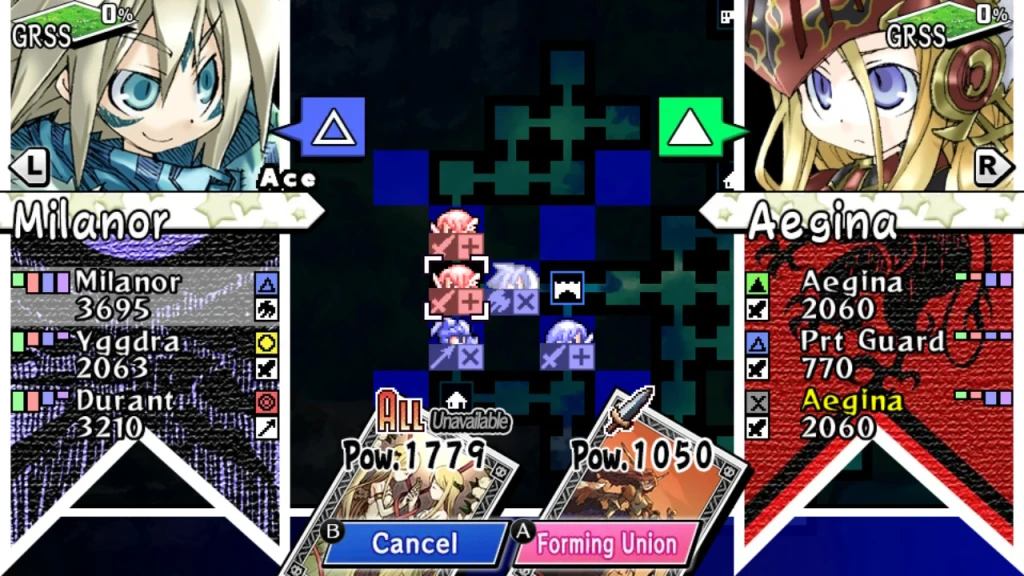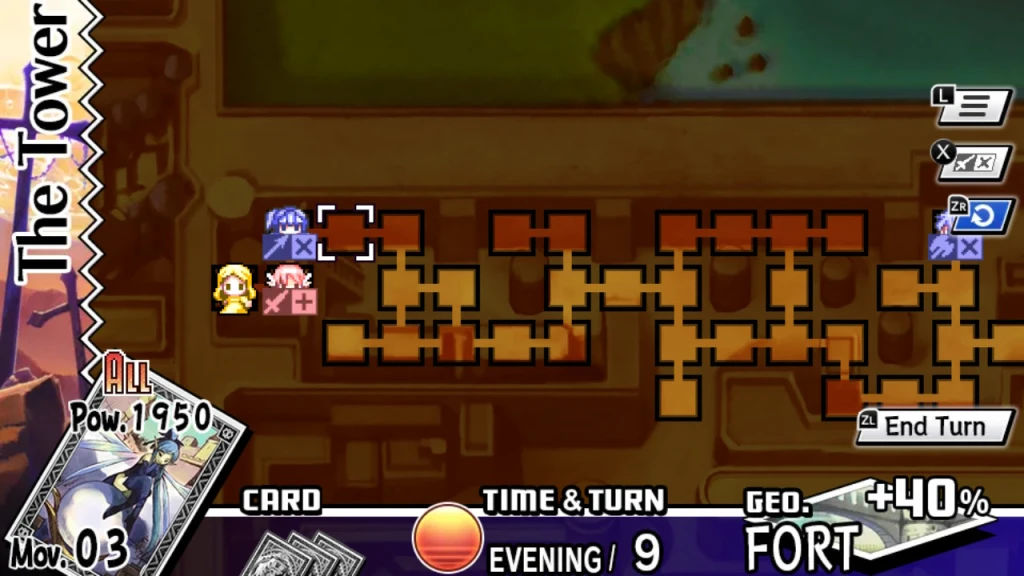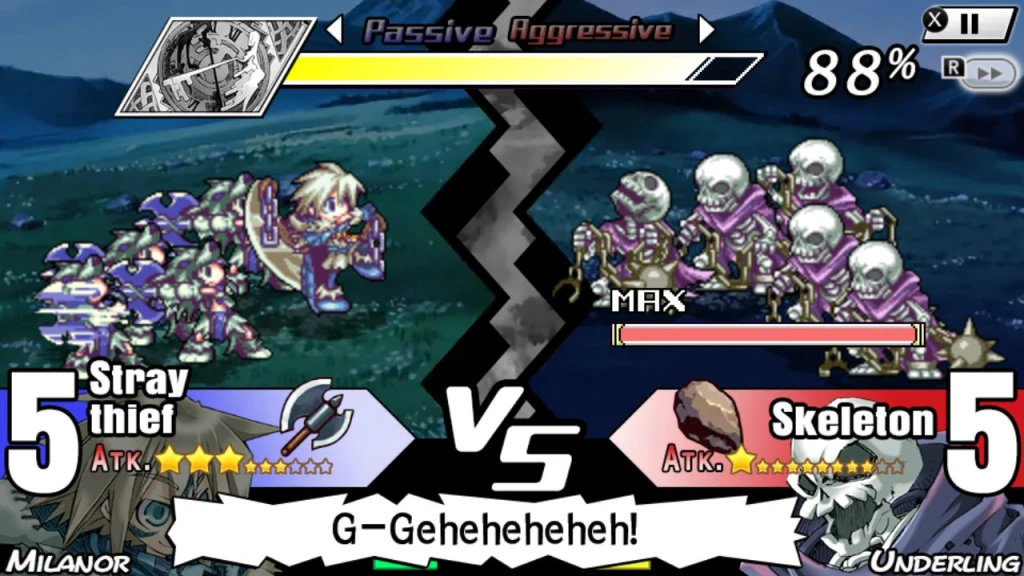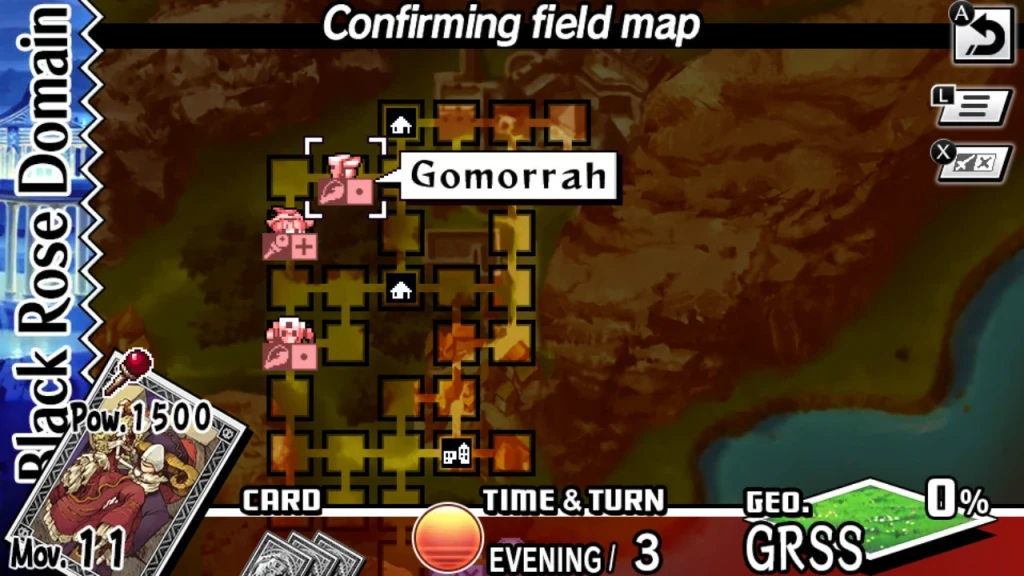Year: 2006 | Publisher: Sting | Developer: Sting| Original format: Game Boy Advance | Version played: Nintendo Switch
I’ve loved tactical RPGs ever since Vandal Hearts in 1997. I can’t get enough of them and will take a chance on pretty much any game in the genre. It usually pays off, but not always… The very best games in the genre tend to come from Japan, which sometimes leaves me battling against the language barrier of import-only releases rather than the rank and file of an enemy army. In the Sega Saturn era, in particular, I took a chance on some amazing looking SRPGs like Black/Matrix, Terra Phantastica or FEDA Remake, but despite perseverance and a deep familiarity with the genre, I’d often find myself slogging through walls of text or struggling to understand their intricate game mechanics.

Yggrda Union is very much in that category for me. Yes, it did receive a US release but I’ve never seen it available for a decent price, so I took a chance on the Japanese version several years ago. I’d heard that boutique developer Sting was known for its small but interesting strategy games, like Knights In The Nightmare for Nintendo DS, which blends the unlikely combination of strategy with bullet hell to unique effect, and figured Yggrda Union was worth a punt. Sadly, I was hit by a double whammy of both endless dialogue and tutorial-heavy mechanics. I messed around with the game for a bit, enjoyed the dinky sprite work and excellent music then put it on the shelf and to the back of my mind.
That is, until earlier this year when, out of nowhere, Sting self-published an English remake of the game in the west on Nintendo Switch and PC. At last, I could finally find out if my instinct about Sting was correct.

Now that I could finally experience Yggdra Union in the King’s English, two things were quickly apparent… First, the wall of text really doesn’t matter since the story is nothing to write home about and can easily be ignored. More importantly, those game mechanics were interesting, unique, intricate and justification alone to play this quirky little RPG.
The central mechanic of Yggrda Union is right there in the title… Union. Your little band of fighters, archers and wizards are much more powerful when they stick together. In fact, it’s in the game’s subtitle too; We’ll Never Fight Alone. Hit the X button while on the battlefield and each one of your tiny units will display a cross, either pointing diagonally or in the cardinal directions, representing the way in which your troops should align with the lead attacker for the most effective attack.

Unlike other games in the genre, Yggdra Union allows only one single attack per turn, and only allows a certain number of turns per battle, meaning that a well considered formation is absolutely crucial to victory. Manoeuvre your little dudes so they’re all linked together and each one of them will join in the attack. The same rules also apply to the enemy, so if you charge in with a poor formation you could find yourself hopefully outnumbered.
As someone who’s been playing SRPGs for over 25 years, this mechanic makes so much sense to me. I’m always tempted to bunch my troops together on the battlefield, usually for defensive purposes, but they always end up clumped together with no greater strategy than covering their backs. In Yggdra Union, positioning is everything and when combined with excellent level design and certain other mechanics, the scope for tactical conundrums feels endless.
Rather than a large field, each battle takes place on a carefully designed grid of squares, complete with forks, bottlenecks and obstacles that force you to think strategically about exactly where everyone should be. It’s not necessarily the case that everyone should just pile toward the enemy units. In other games you wouldn’t position a soldier on the opposite side of a river from where the action is, for example, but in Yggdra Union such a move makes perfect strategic sense if it lines the troops up just right.

Intermission… Yggdra Union is part of Sting’s “Dept. Heaven” series, a small number of RPGs developed by the same team and connected by a shared worldview. Much like the Ogre Battle/Tactics Ogre games, each has an episode number that’s not necessarily released in sequence. So far, episodes I, II, IV and IX have been released and it’s claimed the values relate not to canonical order but as a numerical indicator of the game design’s originality. Which is weird because Sting presumably now need to make five games that are less ambitious than their last. In addition to the main episodes, there are also three Yggdra Union spin-off games, so there’s plenty to look forward to if you like this one.
Another major difference to other games in the genre is the system for moving and attacking. The vast majority of SRPGs assign each unit its own movement rate and attack strength but Yggrda Union uses a deck building card system, well over a decade before such systems became trendy.
Each card has three attributes; a total movement rate, attack power and special ability. Attack power works exactly as you’d expect, special abilities allow you to activate certain spells or skills during battle, while the movement rate is a total number of squares your troops can move in one turn. So let’s say you choose a card with a movement rate of 10 and you have five troops, you might choose to move each of them two squares, or one of them ten squares while leaving the rest behind, and so on…

These strict limitations on movement, combined with the level design and need to form strategic unions, really force you to think tactically with every turn. It’s no exaggeration to say that your mission can succeed or fail based on the choices you make, which is exactly how the best games in this genre should work.
The final systems worth talking about are the morale and passive/aggressive systems. Instead of health, each unit has a total amount of morale, which governs whether they’re strong willed enough to stay in battle or not. Though one of your units might be defeated in one attack, they’ll stay in battle if they still have some morale left. The same goes for the enemy, which encourages you to form strength in numbers through unions, to try and chip away at their morale with multiple attacks per turn.

Morale can be restored if you have the right card skill, or it can be replenished between battles by using medallions or sacrificing key items. Morale also naturally recovers over time if a unit sits out a battle or two, which is a really nice mechanic because it forces you to take different characters into battle each time, while you leave the injured on the subs bench. In so many other SRPGs, you end up taking the same characters into battle each time as they get stronger and leave potentially great fighters behind to grow weak. You have to applaud Sting for designing their way around that problem.
Finally, there’s the passive/aggressive system. Once you’re actually in a fight, you get a unit-v-unit animation screen that reminds me a lot of Advance Wars, except you do have a little influence over how the fight goes. Hold left on the d-pad to make your unit “passive” and they’ll be more vulnerable to attack but while building up their aggression meter. If you then hold right, you can spend the meter to enter “aggressive” mode where you do much more damage and wear the enemy down quickly.

If you’re passive for long enough, however, you can charge the meter all the way to the top to activate your card’s special ability, if it’s compatible with the unit and any other usage conditions. This is a great risk/reward mechanic; will you concentrate on flitting between passive and aggressive to carefully chip away at your enemy or will you take a big risk, leaving yourself passive for a long time in the hope of activating a rewarding skill, which might easily turn the tables, restore some morale or even steal a rare item from the enemy? These are the sorts of fun, moment-to-moment decisions that make a great SRPG so engaging to play.
After waiting more than 15 years to finally play and understand Yggdra Union, I’m not disappointed. This simple looking GBA port could easily be overlooked (and I think it has been) but hiding behind that inconspicuous presentation is a deep and rewarding tactical system that’s almost board game-like in its interlinking mechanics. My experience with Yggdra Union makes me very excited to try some of Sting’s other tactics games, and I can see that a few of them have already been released on Nintendo Switch in Japan. Hopefully it won’t be too long before they also come over here and form a tactical union of their own.
ELEVEN LITTLE THINGS I LIKE ABOUT YGGDRA UNION

1. This chirpy chap.

2. The title cards between chapters are so classy.

3. Little snippets of dialogue add some appreciated character to the battle scenes.

4. I like that Sting went to the effort of creating an entirely new character portrait for this short sequence where Milanor disguises himself as a soldier.

5. Just before each combat scene, you get these great face-off screens featuring beautiful character art.

6. You can’t always issue orders in the attack scenes. Sometimes, special circumstances prevent it.

7. Go the “wrong” way on this map and you can discover a secret character to rescue and add to your party. I wonder if there are more…

8. Russell. Great RPG name.

9. More wonderful videogame skeletons.

10. Sodom…

11. and Gomorrah!
Finally, how about some music from Yggdra Union…
Follow…
